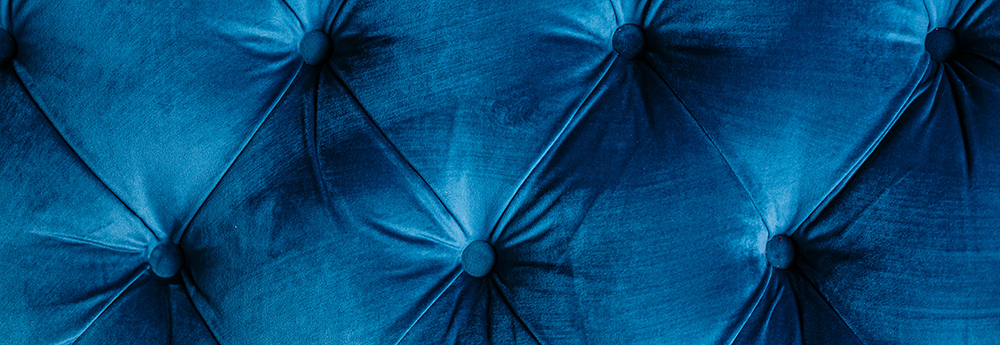Velvet Revival: Incorporating Luxurious Fabrics into Modern Designs15 February 2025 | Admin
The Timeless Appeal of VelvetVelvet has long been associated with luxury, elegance, and sophistication. Once reserved for royalty and nobility, this plush fabric has dramatically returned to contemporary fashion and interior design. Its soft texture, rich depth of colour, and opulent sheen make it a favourite among designers looking to add a touch of refinement to their creations. Whether used in fashion, furniture, or home accessories, velvet is a statement fabric that exudes timeless charm while adapting effortlessly to modern aesthetics. Despite its historical reputation as a formal and traditional material, velvet is now incorporated into sleek, modern looks ranging from casual to contemporary home décor. Its versatility lies in its ability to balance texture and depth, making it a key fabric for designers seeking to add warmth and character to their pieces. Modern Applications of VelvetIn recent years, velvet has experienced a resurgence across multiple industries. It has evolved beyond evening gowns and tuxedos in fashion, now appearing in streetwear, casual layering, and everyday accessories. Designers have reimagined velvet by introducing it into structured blazers, wide-leg trousers, statement handbags, and even footwear. Its ability to elevate an outfit effortlessly makes it an excellent choice for bold statement pieces and subtle, textured accents. Beyond apparel, velvet has also become a key material in interior design. Once primarily associated with traditional, heavy drapery, velvet is now used in sleek, contemporary designs. Velvet sofas, accent chairs, and headboards have gained popularity for their ability to add richness and sophistication to modern spaces. The fabric's light-reflecting surface enhances colour vibrancy, making it a stunning choice for deep jewel tones like emerald green, sapphire blue, and rich burgundy, as well as neutral palettes like blush pink and charcoal grey. Additionally, velvet has found its place in home accessories such as throw pillows, ottomans, and curtains, balancing opulence and comfort. When paired with minimalist décor, velvet is an eye-catching contrast that adds depth and warmth to any room. Pairing Velvet with Other MaterialsOne of the reasons velvet has remained relevant in design is its ability to pair beautifully with various other materials. Its plush, soft texture provides a striking contrast when combined with smooth, structured, or rustic elements. In fashion, velvet pairs well with leather to create an edgy yet refined look. A velvet blazer layered over a leather skirt or paired with slim-fit denim strikes the perfect balance between luxurious and contemporary. For a softer approach, velvet blends well with lace, silk, and satin, offering a delicate, romantic aesthetic. In interiors, velvet complements metallic accents and natural elements. When styled alongside brass, gold, or chrome finishes, velvet enhances the feeling of glamour and sophistication. On the other hand, when paired with wood, linen, or stone, it adds warmth and softness, making it ideal for balancing modern and rustic design styles. For those looking to make a statement, layering different textures within the same colour palette can effectively incorporate velvet without overwhelming a space. For example, a deep emerald velvet sofa with linen cushions and a sleek marble coffee table create an effortlessly stylish contrast. Tips for Sewing and Caring for Velvet FabricsDue to its delicate pile and directional texture,Working with velvet requires some expertise. Unlike standard woven fabrics, velvet has a nap, meaning the fibres lie in one direction, affecting how it looks and feels. When sewing with velvet, cutting all pieces in the same direction is essential to maintain a uniform appearance. To avoid fabric shifting, it is best to use clips instead of pins, as pins can leave permanent marks. A walking foot or roller foot attachment can help glide the fabric smoothly through the machine. When pressing velvet, avoid direct heat on the pile; use a steam iron held slightly above the fabric to remove creases without flattening the texture. For care and maintenance, velvet should be treated carefully to preserve its luxurious texture. When washing velvet clothing, it is best to dry clean or hand wash with cold water and mild detergent. If machine washing is necessary, select a gentle cycle with a mesh laundry bag to protect the fibres. After washing, allow the fabric to air dry and avoid wringing out excess water to prevent crushing the pile. For velvet furniture, regular gentle vacuuming with a soft brush attachment helps remove dust and maintain its appearance. In case of spills, blot the fabric immediately with a dry, absorbent cloth rather than rubbing, which can damage the fibres. Some modern velvets come with stain-resistant treatments, making them easier to maintain in high-traffic areas. Why Velvet is Here to StayVelvet's resurgence in fashion and interior design proves this luxurious fabric is more than a passing trend. It has successfully transitioned from a material reserved for formal attire and traditional décor to a versatile staple that enhances both contemporary fashion and modern living spaces. Its rich texture, colour depth, and adaptability make it an exciting choice for those looking to introduce a touch of opulence into their wardrobe or home. By pairing velvet with contrasting materials, understanding how to care for it, and incorporating it into unexpected styles, this fabric can continue to evolve as a timeless yet innovative element in design. Whether through a statement velvet dress, an elegant sofa, or subtle accessories, embracing velvet allows for a bold yet sophisticated expression of personal style. |
|



